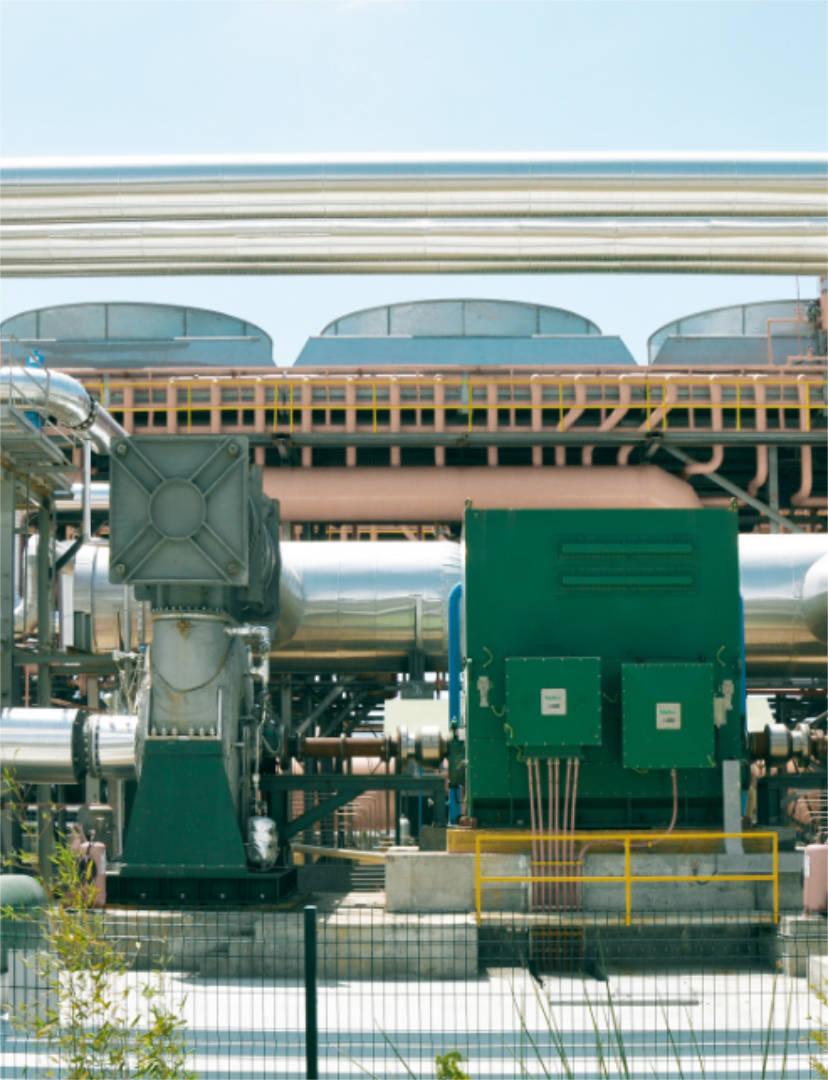- Technology
- /
- ORC
Organic Rankine Cycle system
An Organic Rankine Cycle (ORC) system is a closed thermodynamic cycle used for power production from low to medium-high temperature heat sources ranging from 80 to 400°C and for small-medium applications at any temperature level. The ORC technology allows for efficient exploitation of low-grade heat that otherwise would be wasted.
For decades, the traditional choice of expander for ORC cycles worldwide has been to employ axial or radial inflow turbines. Exergy introduced an innovation utilizing the Radial Outflow Turbine (ROT), applying this extremely efficient technology at a vast range of customized ORC power plants with additional advantages.
Exergy’s expertise in tailor-made ORC systems counts a portfolio of more than 500 MWe installed. Aside from its customized solutions Exergy’s offer comprises a standard ORC series.

PRODUCE CLEAN AND AFFORDABLE ELECTRICITY FROM A WIDE RANGE OF HEAT SOURCES WITH THE ORGANIC RANKINE CYCLE.
The Organic Rankine Cycle
The working principle of an Organic Rankine Cycle power plant is similar to the most widely used process for power generation, the Clausius-Rankine Cycle.
The main difference is the use of organic substances (hydrocarbons or refrigerants) instead of water (steam) as working fluid.
The organic working fluid has a lower boiling point and higher vapor pressure than water and is therefore able to use low-medium temperature heat sources to produce electricity more efficiently than steam cycle.
The organic fluid for the cycle is chosen for best fit with the heat source according to their various thermodynamic properties, thus obtaining higher cycle and expander efficiencies.
The main components
of an Organic Rankine Cycle power
plant include:
1
THE ORC TURBINE
This is the key component of the entire ORC power plant and determines ORC system performance. It expands the working fluid, producing mechanical energy that is converted into electricity by a generator coupled with the turbine shaft.
2
THE HEAT EXCHANGERS
The organic Rankine cycle working fluid flows through the heat exchangers, extracting heat from the heat source. Shell and tube heat exchangers are usually applied but they can vary in terms of geometry and configuration depending on the energy source and total thermal input.
3
THE CONDENSER
With the direct air to fluid heat exchanger, the organic fluid is cooled and liquefied before entering the pump. The use of air eliminates the need for water treatment and makeup. It is also possible to use a water-cooled condenser.
4
THE FEED PUMP
Brings organic fluid from the condensation pressure to the maximum pressure of the Organic Rankine Cycle. The pump is usually driven by an electric motor at variable rotating speed.

Organic Rankine Cycle applications
By converting thermal energy to electricity from low to medium-high temperatures, ORCs are suitable for a wide range of applications, given a ORC plant size between 100 kW ad 50 MWe, including:
Organic Rankine cycle vs Rankine cycle: learn why ORC cycles are more competitive and flexible
1
SUITABLE FOR LOWER TEMPERATURE APPLICATIONS WITH DIFFERENT ENERGY SOURCES

Suitable for a wider range of applications worldwide
2
NO LIQUID PHASE DURING EXPANSION

Reliable and long-lasting expander

Simpler and lower maintenance costs
3
COMPACT AND AUTOMATED

No need for operators
4
MODULAR CONFIGURATION

Ease of transportation and installation

Low environmental footprint

Reduced land occupation

Low associated costs for foundation and assembly
5
DESIGN FLEXIBILITY FOR USE OF THE MOST EFFICIENT WORKING FLUIDS

Optimized efficiency

Customized solution with respect to resource
6
OPERATIONAL FLEXIBILITY

Superior off-design performances
7
NO-WATER CONSUMPTION OPTION

Lower environmental impact with no waste of water

No water treatments required

Wider application also in remote areas
8
SIMPLE, FAST AND RELIABLE SYSTEM MAINTENANCE

Long product life

Ideal for cycling environments and where fast start stops are required
9
HIGH MARKET AVAILABILITY OF CHEMICAL WITH FLUID REFILLING RARELY REQUIRED

Lower operating costs


